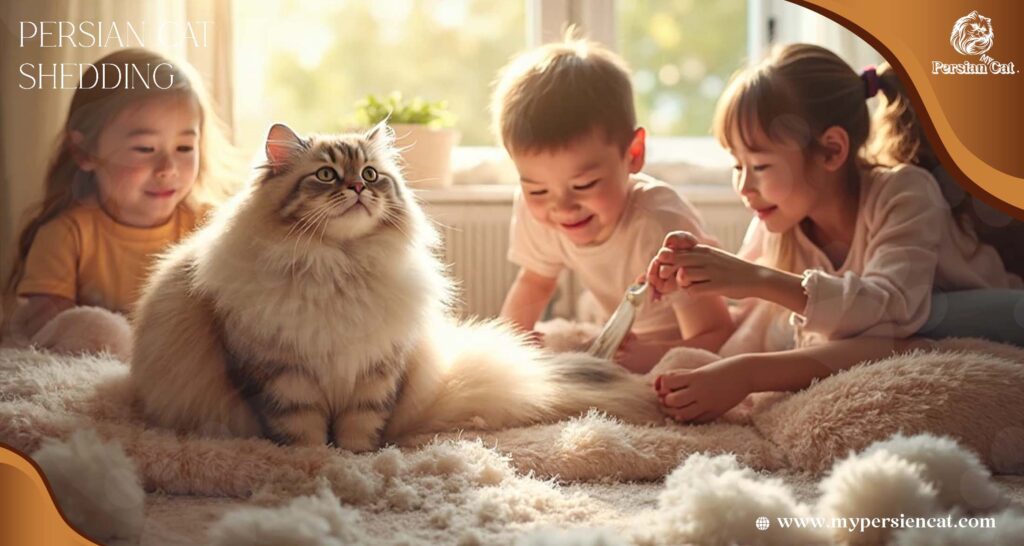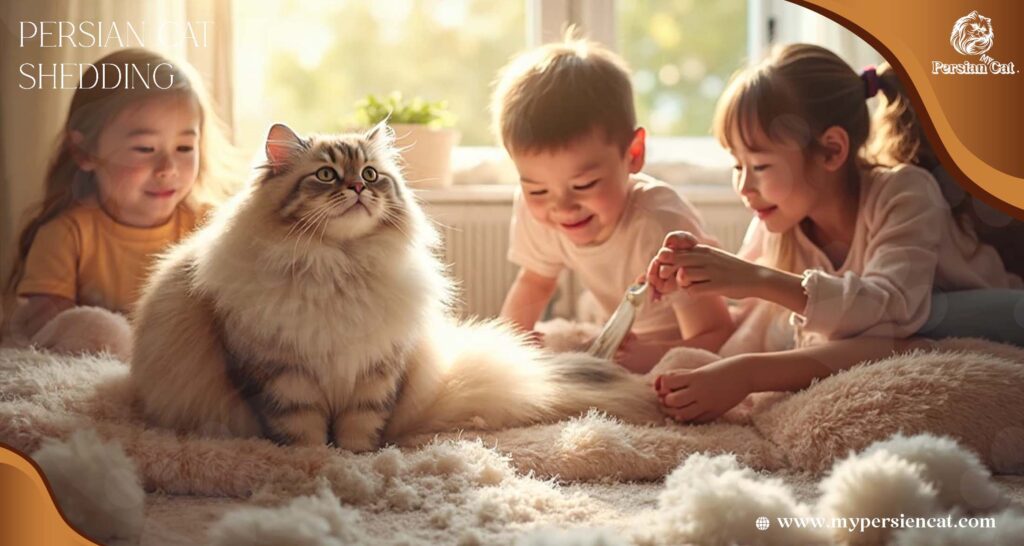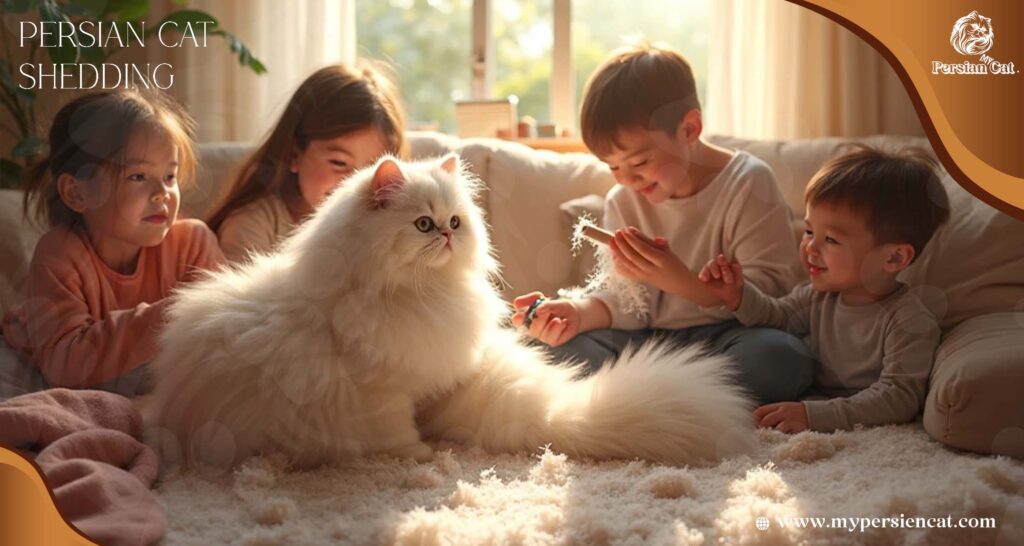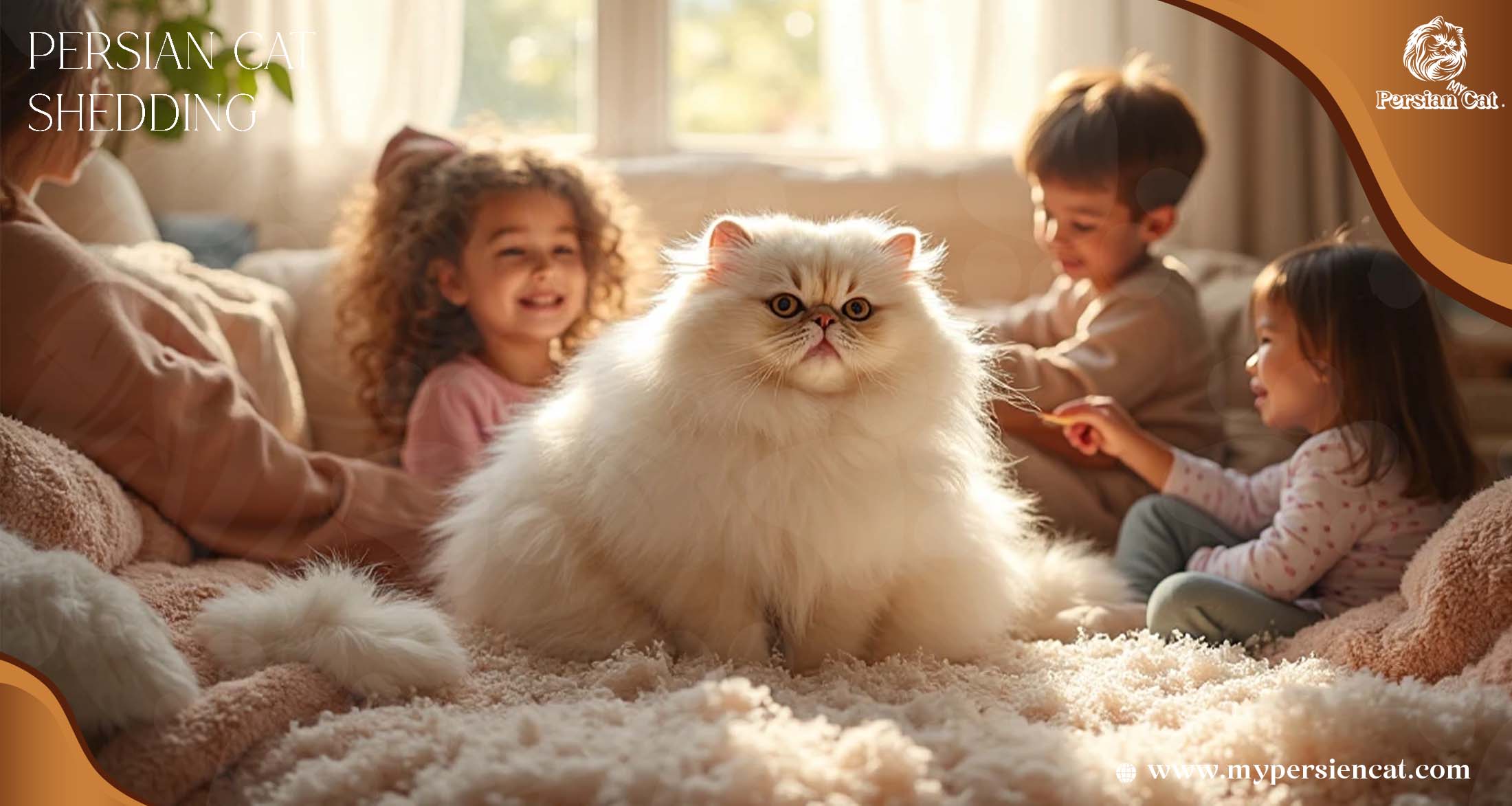Introduction
When I first brought home my Persian cat through adoption, I was amazed by the love this fluffy pet gave my family. I was also shocked by how much fur ended up on my clothes and couch. Many new owners ask the same thing I did: do Persian cats shed a lot?
The truth is yes, shedding is normal. But it can feel like a lot if you are not ready for it. In this guide, I’ll share what I learned from my own cat, along with easy tips to manage fur. That way, you and your Persian can enjoy a happy home without stress.
Why Do Persian Cats Shed So Much?
If you see little flakes of fur on your sofa, don’t worry—it’s normal. Persian cats have a long double coat. This means they carry two layers of fur. The bottom is soft and thick. The top is silky and smooth. This makes them very fluffy, but it also means more fur on your clothes and carpet.
Like most cats, Persians shed with the seasons. In spring, they lose their heavy winter coat. In fall, they shed again to grow new fur. Many owners call this the “shedding season.” During this time, brushing every day is the best way to keep fur under control.
What about Himalayan cats? They shed too. Himalayans are related to Persians, so their coats act the same way. If you’ve seen one, you know they leave behind a cloud of fur as well. The good news is that all this shedding is normal. It’s just part of living with these beautiful, long-haired cats.

Normal vs. Excessive Shedding
When I first got my Persian, I thought, “my cat sheds a lot—maybe too much!” Later, I learned there’s a big difference between normal shedding and real hair loss. Persians shed more than many cats because of their thick double coat. So, seeing fur on your sofa or clothes is normal.
Normal shedding means loose fur comes off when you brush or pet your cat. It often follows the Persian shedding seasons—spring and fall. During these times, they drop old fur and grow new. It’s like your cat changing into a fresh sweater for the season.
But watch for signs that are not normal. Bald spots, thin patches, or piles of hair on the floor can point to a problem. Too much shedding may come from stress, poor food, skin issues, or allergies. I saw this once with my rescue Persian, and better food plus skin care fixed it.
If you’re worried, stay calm—there are safe steps to try. At home, you can brush more often or add omega fatty acids to meals. If the shedding comes from health issues, a vet may give cat hair fall medicine. The key is knowing what “normal” looks like for your cat and noticing when things change.
Is Persian Cat Hair Dangerous?
When my aunt first visited after I adopted my Persian, she saw fur on the sofa and asked, “Is Persian cat hair dangerous?” It’s a fair question, especially for families with kids.
The truth is, Persian cat hair is not toxic. It will not hurt you if it lands on your bed, clothes, or floor. But it can bother people with asthma or allergies. That’s because cat hair carries dander—tiny flakes of skin. Mixed with dust, this can make some people sneeze, itch, or feel stuffy.
Many also ask if Persians are hypoallergenic cats. Sadly, they are not. In fact, they may trigger allergies more than short-haired cats. Their long coats shed a lot, which spreads more fur and dander. If your child has asthma, or someone at home has breathing trouble, you’ll need extra care. Daily brushing, vacuuming, and even an air purifier can help.
In my own home, hygiene made a big difference. We set easy rules: wash hands after petting, groom the cat every day, and keep bedrooms cat-free. With these steps, living with my Persian became smooth, even around kids.
So, Persian fur is not “dangerous.” It’s just like dust—something to manage. With care, cleaning, and love, your fluffy cat can fit right into your family.

How to Control and Reduce Persian Cat Shedding
When I first adopted my Persian, fur was everywhere. My black T-shirts turned white, and my sofa wore a furry coat. But soon I learned that shedding is normal. With simple habits, you can manage it.
The best step is daily brushing. Think of it as bonding, not a chore. A few minutes each day removes loose hair before it spreads. It also prevents tangles, which Persians often get. Brushing is the easiest way to reduce shedding.
Bathing also helps. A bath every three to four weeks keeps the coat clean and lowers loose hair. My cat disliked water at first, but gentle care made it routine. Regular baths work like a natural shedding treatment.
Food matters too. When I switched to high-quality food with omega fatty acids, my cat’s coat grew shiny and strong. Shedding slowed down. Supplements can help, but ask your vet first. A healthy inside means less hair outside.
Don’t forget your home. Dry air can cause more shedding. A simple humidifier keeps skin and fur healthy. It may seem small, but it works well.
You may wonder how to stop a cat moulting. The truth is—you can’t stop it. Shedding is natural. But you can control it. With brushing, baths, good food, and a cozy home, the “fur storm” feels more like a soft breeze.
Personal Experience With Persian Cat Shedding
When I adopted my Persian, I knew life would change. My landlord had given me permission after weeks of planning. I explained that this cat was safe, registered, and part of our dream. The day I carried her home, I felt the love only a rescue pet can give.
Then reality set in: fur was everywhere. My kids soon learned that their black school clothes always carried a “cat stamp” of white hair. At first, we laughed. Later, we turned grooming into a habit. Each evening, my children took turns brushing her coat. What began as a chore became a sweet family ritual.
We also made a cozy corner just for her, filled with toys and blankets. It didn’t stop shedding, but it helped keep fur in one spot. During the Persian cat shedding season, hair still spread more. Yet, with care and patience, we found balance.
Looking back, I don’t see fur as a problem. It was a small price to pay for joy, warmth, and love. In fact, the shedding became a sign of life in our home. If you adopt a Persian, be ready for hair—but also for happiness.

FAQs on Persian Cat Shedding
Do Persian cats shed a lot?
Yes. Persians shed more than short-haired cats because of their long double coat. When I adopted mine, I thought, my cat sheds a lot more than any pet I’ve had before! It’s normal for this fluffy breed.
Do Persian cats shed year-round?
Yes. Shedding happens all year. It is strongest in spring and fall, during the Persian cat shedding season. At these times, your home may look like it has a layer of fur. Daily brushing helps a lot.
How long does Persian cat hair take to grow back?
If your cat loses patches of hair, it takes about 3–4 months to grow back. Once, my Persian had a thin patch after grooming. By the next season, her coat was full again.
Do Persian cats scratch furniture more when shedding?
Sometimes. Scratching helps cats stretch and eases the itch from loose fur. A sturdy scratching post will save your sofa from becoming their target.
Do Himalayan cats shed too?
Yes. Himalayans share Persian genes. Their coats and shedding cycles are almost the same. During shedding season, you’ll see the same “fur clouds” in their homes too.
What do other owners say online?
On forums like Persian cat shedding Reddit, people share tips and stories. They talk about vacuum tricks, favorite brushes, and funny fur-covered outfits. It helps to know you’re not alone—every Persian home is fluffier than average!
Final Thoughts: Living With Persian Cat Shedding
Living with Persian cat shedding is part of the journey. Yes, you will find fur on your clothes, sofa, and even your favorite blanket. But with simple routines—brushing, baths, and good food—you can manage it. The secret is patience and planning.
When I think back to adopting my Persian, I remember both the joy and the worry. My home filled with fluff, and my kids learned to brush her every night. Soon, it became a sweet family habit. Even with the extra fur, the love she brought made it all worth it. In fact, the shedding felt like a sign of life and warmth in our home.
If you’re planning adoption, prepare first. Make sure your home has space. Be ready for daily grooming. Talk to your family so everyone understands the work. If needed, check with your landlord and finish any papers or registrations. This planning makes shedding easy to handle.
It also helps to know the Persian cat price before adoption. That way, you can plan both money and care. Shedding may feel like work, but for a fluffy, loving Persian, it’s a small price to pay.
Living with a Persian means living with fur. But more than that, it means living with love. With care and patience, shedding is not a problem. It is simply part of the beautiful story of sharing life with a Persian cat.
About The Author
Yasin Ahmed Tusher
I Have Five Years of Experience With Persian Cat
In that time, I have learned a lot about how to care for them. Persian cats have long, soft fur, so they need to be brushed often. I know how to brush and bathe them to keep their coats clean and smooth.
I also understand what they like to eat and how to keep them healthy. Persian cats are calm and loving. I enjoy spending time with them and making sure they feel happy and safe.
I can give them medicine if needed and watch for signs of illness. I know how to care for both kittens and older cats. Taking care of Persian cats is something I do with love and care every day.
Phone : 01978040328
Fax : 001978040328
Email : info@mypersiencat.com
Persian Cat Shedding Persian Cat Shedding Persian Cat Shedding Persian Cat Shedding Persian Cat Shedding Persian Cat Shedding Persian Cat Shedding Persian Cat Shedding Persian Cat Shedding Persian Cat Shedding Persian Cat Shedding


